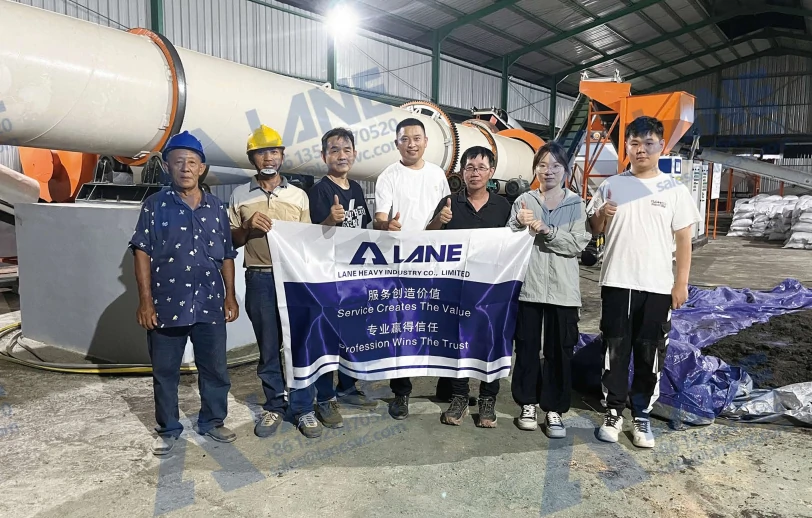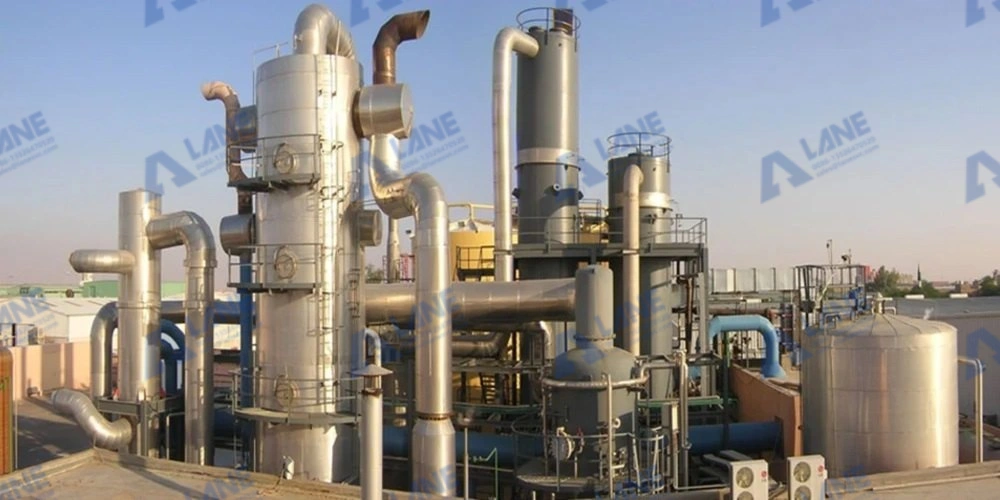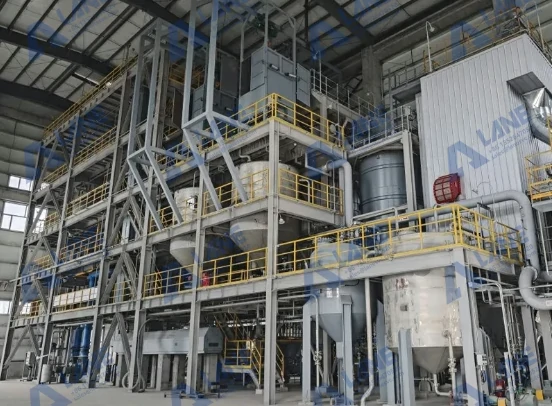
The ammoniation process in DAP production is one of the most critical steps that determines the quality, nutrient ratio, and market value of Diammonium Phosphate (DAP). But while most buyers only look at equipment capacity or price, very few truly understand how this ammoniation step shapes the final fertilizerβÄîand how a well-designed system can save massive energy, reduce wastage, and boost granulation efficiency.
If youβÄôre planning to invest in a DAP plant or upgrade your existing line, understanding the ammoniation process in DAP production will help you make smarter technical and financial decisions.

What Exactly Is the Ammoniation Process in DAP Production?
Simply put, itβÄôs the stage where ammonia gas reacts with phosphoric acid to create the slurry that later turns into DAP granules.
This reaction directly controls:
NβÄ™P ratio (18-46-0)
Reaction heat
Slurry viscosity
Granulation performance
Color and purity of final DAP
A stable ammoniation process is the backbone of the entire DAP fertilizer production line.
How the Ammoniation Process Works βÄî A Clear, Smooth Breakdown
Although the ammoniation process in DAP production sounds technical, the core idea is simple: you are guiding a controlled chemical reaction between phosphoric acid and ammonia to create highly concentrated, crop-ready DAP granules. The magic happens inside an ammoniation tank, pipeline reactor, or granulator, depending on the plant design, but the logic is nearly the same.
It begins with precise chemical dosing. Phosphoric acid (Hβ²ÉPOβ²³) is metered into the system at a stable flow rate, while gaseous or liquid ammonia is injected in a carefully calculated ratio. As soon as these two streams come into contact, they react exothermically βÄî meaning they release heat naturally, which becomes an advantage rather than a challenge. This heat helps evaporate moisture, improves material plasticity, and supports granulation downstream.
Inside the ammoniation unit, the reaction passes through several controlled stages. At first, ammonia neutralizes part of the acid, producing monoammonium phosphate (MAP). As the reaction continues and more ammonia is added, the material shifts toward the desired diammonium phosphate (DAP) composition. Operators typically monitor three critical values: free ammonia, slurry temperature, and slurry density. When these parameters fall within the ideal window, you get the perfect DAP slurry βÄî sticky enough to help form strong granules, but stable enough to avoid runaway reactions.
From here, the slurry flows directly into the granulator, where it coats recycled particles and grows them layer by layer. The heat coming from the ammoniation reaction improves bindability, reduces the need for extra moisture, and stabilizes granule formation. This integrated approach is why modern DAP plants rely heavily on optimized ammoniation technology.
A well-designed ammoniation system ensures:
Consistent nutrient ratios, especially N and P levels
Lower energy usage thanks to self-generated heat
Stronger, more uniform granules ideal for downstream drying
Reduced acid consumption through better neutralization efficiency
LANEβÄôs engineering teams focus on delivering ammoniation systems with tighter control loops, corrosion-resistant pipelines, and intelligent flow management βÄî giving customers a stable, safe, and high-yield DAP production environment.

Common Problems in Ammoniation (and How LANE Solves Them)
| Problem | Cause | LANE Solution |
| Foaming in the reactor | Excess heat or poor mixing | Controlled injection + optimized reactor shape |
| Slurry too thick | High acid concentration | Automated moisture regulation |
| Granules too weak | Incorrect NβÄ™P ratio | Precision ammonia flow meters |
| Low granulation rate | Slurry instability | Closed-loop ammoniation control |
Why the Ammoniation Process Matters for Your DAP Plant
The ammoniation process isnβÄôt just a chemical step βÄî itβÄôs the performance engine of the entire DAP plant. When ammonia and phosphoric acid react with precision, everything downstream becomes easier, more efficient, and more profitable. A stable ammoniation system determines whether you get strong, uniform DAP granules or inconsistent batches that crumble in handling.
A well-controlled ammoniation stage ensures the right NβÄ™P ratio, which directly affects crop performance and product market value. At the same time, the heat released during the reaction naturally reduces moisture, meaning the dryer consumes less fuel and the granulator operates more smoothly. Plants with optimized ammoniation typically see higher throughput, fewer operational shutdowns, and significantly lower acid losses.
This step also drives operational stability. When the slurry entering the granulator is consistent in viscosity, temperature, and composition, the entire lineβÄîfrom granulation to drying to screeningβÄîruns with predictable efficiency. That translates to higher yield, reduced waste, and better control over granule size distribution.
LANEβÄôs ammoniation solutions emphasize accuracy, corrosion-resistant materials, and smart dosing technology. For plant owners, that means fewer maintenance headaches and a more reliable, energy-efficient DAP production process that remains stable even under high output conditions.

Conclusion
The ammoniation process in DAP production is where chemistry, engineering, and technology come together. A stable, precise ammoniation stage means a more profitable, more efficient, and more reliable DAP plant.
Whether you’re investing in a new plant or upgrading an existing one, choosing a supplier with ammoniation expertiseβÄîsuch as LANEβÄîsignificantly reduces operational risks and boosts long-term return.
For more details, please feel free to contact us.
Henan Lane Heavy Industry Machinery Technology Co., Ltd.
Email: sales@lanesvc.com
Contact number: +86 13526470520
Whatsapp: +86 13526470520
Copyright © Henan Lane Heavy Industry Machinery Technology Co., Ltd.